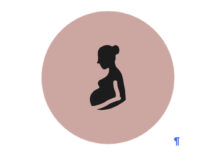Despite progress in some areas, equality remains a long way off, with millions of girls and women affected by poverty, violence and discrimination
By Emma Batha
LONDON (Thomson Reuters Foundation) – World leaders promised 25 years ago to empower girls and women and work towards ending discrimination following a landmark gender equality meeting in Beijing.
From getting more girls into school to reducing deaths in childbirth, improvements have been made. But equality remains a long way off, with millions of girls and women’s lives still scarred by discrimination, poverty and violence.
In Focus: International Women’s Day
As the world marks International Women’s Day, here is a snapshot of progress since the 1995 Beijing Platform for Action, the most progressive blueprint for advancing women’s rights.
* 25% of seats in national parliaments are held by women – more than double the 11% share in 1995.
* In the last decade, 131 countries have enacted legal and regulatory reforms in support of gender equality.
* The number of girls out of primary school has halved from 65 million to 32 million.
* Two-thirds of secondary school age girls are enrolled in school, up from half – although not all finish.
* 90% of girls aged 15 to 24 are literate, up from 80%.
* The number of maternal deaths per 100,000 live births fell 38% between 2000 and 2017.
* About 50 countries have liberalised their abortion laws in the last 25 years, with 18 lifting outright bans.
* Child marriage affects one in five girls today, down from one in four in 1995.
* 34% of girls aged 15 to 19 have undergone FGM in the 31 countries where there is U.N. data, down from 47% in 1995.
* The adolescent birthrate has fallen from 60 to 44 births per 1,000 girls.
* Girls born today can expect to live nearly eight more years than girls born in 1995 (an average of 75.2 years).
FACTS ON INEQUALITY TODAY
* Men hold 75% of parliamentary seats worldwide and 73% of managerial positions.
* Women on average do three times more unpaid care and domestic work than men, limiting access to other opportunities.
* Women are paid 16% less than men on average, rising to 35% in some countries.
* Globally, 62% of women aged 25 to 54 are in the labour force compared to 93% of men – broadly unchanged since 1995.
* Nearly one in five women has faced violence from an intimate partner in the last year.
* At least 60% of countries still discriminate against daughters’ rights to inherit land and other assets in either law or practice.
* Nearly one in four girls aged 15–19 is neither employed, in education or training, compared to one in 10 boys.
* Each year, 12 million girls are married in childhood, and four million are at risk of FGM.
* 970,000 adolescent girls live with HIV compared to 740,000 in 1995. Girls account for nearly three in four new infections among adolescents.
Sources: UN Women, UNICEF, Center for Reproductive Rights
(Reporting by Emma Batha @emmabatha; Editing by Claire Cozens. Credit the Thomson Reuters Foundation)







